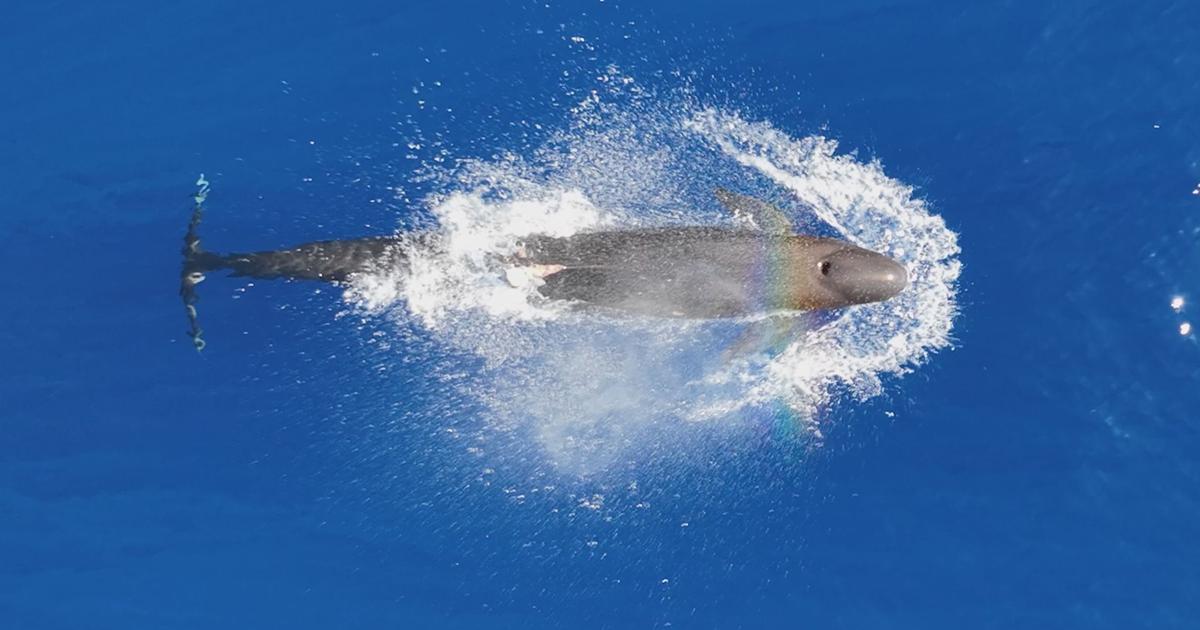LĀNA‘I, Hawai‘i (Island News) — A heartbreaking discovery off Lāna‘i this week. Researchers with Cascadia Research Collective found an endangered false killer whale severely entangled in marine debris.
The adult male, identified as HIPc373, is part of Cluster 4 of the endangered main Hawaiian Islands population of false killer whales. The team spotted the animal during their ongoing field project, their 12th year working off Maui Nui and sixth based on the island of Lāna‘i.
The group’s goal this season is to locate and study members of this rare population, using satellite tags, genetic sampling and photo identification to track behavior and health. But during one of those surveys, the crew witnessed something they’d never seen before.
A heartbreaking discovery off Lāna‘i this week. Researchers with Cascadia Research Collective found an endangered false killer whale severely entangled in marine debris. The team spotted the animal during their ongoing field project, their 12th year working off Maui Nui and sixth based on the island of Lāna‘i.
“Finding out that it was entangled in marine debris was quite a surprise,” said Robin Baird, a research biologist with Cascadia Research Collective. “We’ve never documented one of these individuals entangled in marine debris before.”
A one-inch floating polypropylene line was found slicing through the whale’s dorsal fin and wrapped around its body. Drone footage and photographs captured the severity of the entanglement to help National Oceanic and Atmospheric Administration’s (NOAA) disentanglement experts assess possible rescue efforts.
The same whale was photographed in good health just last year. Researchers believe the animal may have become tangled while foraging near floating debris, where prey like mahi-mahi and other fish often gather.
“If we can get the line off, it just gives it a better chance of surviving,” said Baird. “Whether or not it’ll survive this at this stage is really unknown.”
Cascadia’s field crew has received specialized cutting tools from NOAA and plans to attempt a rescue if they can locate HIPc373 again. However, the team cautions that even if freed, the whale’s injuries could become infected, and his ability to feed or heal remains uncertain.
For researchers, the sight was a painful reminder of the human impact on Hawaii’s oceans.
“If people are on the water and have the opportunity to pick up ropes or netting and discard it on land, that would be a really valuable thing, not just to protect false killer whales, but basically any species in the marine environment,” Baird said.
False killer whales are top predators and indicator species, meaning their health reflects the balance of the entire marine ecosystem. The population around Hawaii is listed as endangered, with scientists estimating a decline of more than three percent each year.
Cascadia Research Collective’s current field project runs through Oct. 27, funded by the State of Hawai‘i and the Pacific Islands Fisheries Science Center, with additional support from Dolphin Quest.
The team plans to continue tracking false killer whales, spinner dolphins and other species around Maui Nui to better understand how they are adapting and what threats they face.

